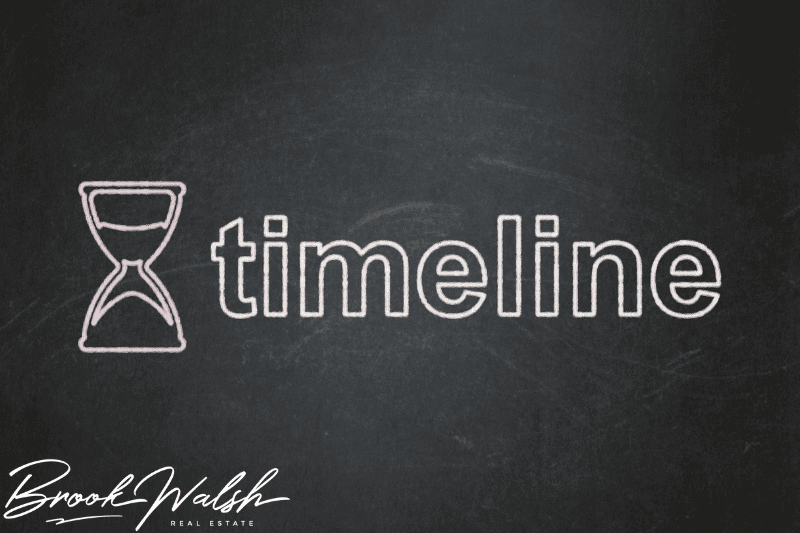Reverse 1031 Exchange Explained: Top Benefits, Rules & Step-by-Step Guide [2025]
Discover how this powerful real estate strategy helps defer taxes while acquiring a replacement property first. Rules, timeline, examples, and FAQs included.
What Is a Reverse 1031 Exchange?

A Reverse 1031 Exchange is a strategic real estate transaction that allows investors to acquire a new property before selling their existing one while still deferring capital gains taxes under IRS Section 1031. Unlike a traditional 1031 exchange—where the investor sells their property first and then identifies a replacement—a reverse exchange flips the sequence.
This method is particularly useful when you identify a great investment opportunity but haven't yet sold your current property. It provides flexibility and avoids losing a prime purchase due to timing constraints.
Key Differences from a Traditional 1031 Exchange
| Feature | Traditional 1031 Exchange | Reverse 1031 Exchange |
|---|---|---|
| Sequence | Sell first, buy later | Buy first, sell later |
| Risk of Losing Property | Higher if replacement is delayed | Lower due to early acquisition |
| Financing Complexity | Moderate | High – lender involvement needed |
| Intermediary Role | Required | Critical – more involved |
How a Reverse 1031 Exchange Works

To execute a reverse exchange, a Qualified Intermediary (QI) or an Exchange Accommodation Titleholder (EAT) temporarily holds title to the replacement property. This avoids “constructive receipt,” which would invalidate the tax-deferral benefit.
Step-by-Step Mechanics:
-
Engage a Qualified Intermediary (QI): Before closing on the new property, the investor partners with a QI or EAT.
-
Acquire Replacement Property First: The QI purchases and "parks" the replacement property on behalf of the investor.
-
Identify Property to Sell: Within 45 days, the investor identifies the relinquished property they intend to sell.
-
Sell Original Property: The investor has 180 days from the purchase of the replacement to complete the sale of the relinquished property.
-
Exchange Finalization: Once the sale occurs, the proceeds go to the QI, who transfers the replacement property to the investor.
IRS Rules and Legal Requirements
The Internal Revenue Service has established precise guidelines to regulate reverse exchanges, primarily through Revenue Procedure 2000-37.
Key IRS Rules:
-
45-Day Rule: You must identify the property to be sold within 45 calendar days from acquiring the replacement.
-
180-Day Rule: The sale of the relinquished property must close within 180 days from the acquisition of the replacement.
-
No Constructive Receipt: The taxpayer cannot directly own the replacement property during the exchange period.
These rules ensure compliance and safeguard the tax-deferred status of the transaction.
Key Benefits of a Reverse 1031 Exchange

-
Tax Deferral: Avoid paying capital gains taxes by rolling proceeds into another investment.
-
No Rush to Sell: Acquire the perfect replacement property without being pressured to sell your current asset prematurely.
-
Market Timing: Buy low and sell high by adjusting transaction timing based on market conditions.
-
Portfolio Optimization: Align new purchases with long-term investment strategies.
Step-by-Step Process
Step 1: Hire a Qualified Intermediary
Your QI should be experienced and capable of managing the complexities of a reverse exchange.
Step 2: Purchase the Replacement Property
The QI acquires and parks the new property, keeping it legally separate from your ownership.
Step 3: Identify the Property to Sell
Within 45 days, provide written notice of the asset you plan to relinquish.
Step 4: Close on the Sale
Complete the transaction within the 180-day window, and the QI will finalize the exchange.
Step 5: Take Ownership
Once the original property is sold, the QI transfers title of the replacement to you, completing the reverse 1031 exchange.
Reverse Exchange Structures
There are two primary structures for conducting a reverse 1031 exchange, and the choice depends on specific logistical and legal factors.
Exchange Last (Replacement Property Parked First)
This is the most common structure. The Exchange Accommodation Titleholder (EAT) takes title to the new replacement property and holds it until the investor sells the relinquished property. After the sale, the replacement property is transferred to the investor.
-
Most IRS-friendly
-
Used when the new property is ready before selling the old one
-
Suitable when timing is uncertain
Exchange First (Relinquished Property Parked)
In this less common approach, the investor transfers their existing property to the EAT before acquiring the replacement property themselves. This method is rarely used because it can trigger financing and title complications.
-
Useful when financing restricts title transfer on the new asset
-
Riskier and more complex
Costs Involved in a Reverse 1031 Exchange

Reverse exchanges come with added complexity and cost compared to standard 1031 exchanges. Here's a breakdown of the typical expenses:
| Type of Expense | Estimated Cost Range |
|---|---|
| Qualified Intermediary Fees | $5,000 – $10,000+ |
| Title and Escrow Services | Varies by state and property |
| Legal and Advisory Services | $1,500 – $5,000 |
| Holding Costs (if applicable) | Taxes, insurance, maintenance |
| Transfer Taxes & Recording Fees | Local jurisdiction dependent |
While these costs may seem steep, they’re often justified by the capital gains tax savings and the flexibility the structure offers.
Risks and Challenges
While a reverse 1031 exchange can be a savvy investment strategy, it’s not without its pitfalls:
-
Strict IRS Deadlines: Missing the 45-day or 180-day rule can disqualify your exchange.
-
Financing Issues: Many lenders hesitate to fund purchases where the borrower isn't on title immediately.
-
Increased Administrative Complexity: Legal paperwork, title holding, and compliance require expert guidance.
-
Failed Sale Risk: If you cannot sell the relinquished property in time, you lose the tax deferral advantage.
Mitigating these risks involves careful planning, working with experienced professionals, and maintaining robust documentation.
Common Use Cases
Reverse 1031 exchanges are especially popular among:
-
Real Estate Investors: Allows investors to buy the right property immediately without waiting.
-
Commercial Developers: Flexibility to secure development sites before disposing of existing holdings.
-
High Net-Worth Individuals: Useful in managing large portfolios with strategic tax planning.
Example: A developer sees an opportunity to acquire an off-market retail center. They use a reverse exchange to secure the deal while arranging for the later sale of an underperforming asset.
Reverse vs Traditional 1031 Exchange
Here’s a quick comparison table to highlight the core differences:
| Feature | Traditional Exchange | Reverse Exchange |
|---|---|---|
| Initial Transaction | Sell current property | Buy new property |
| Need for EAT | No | Yes |
| Use Case | Planned upgrades | Opportunistic purchases |
| Timeline Complexity | Moderate | High |
| Risk Management | Easier to manage | Requires detailed planning |
Important Timeline Milestones

Staying within IRS deadlines is crucial for the success of your reverse 1031 exchange:
-
Day 1: Purchase of the replacement property (held by EAT)
-
Day 45: Deadline to identify the relinquished property in writing
-
Day 180: Deadline to complete the sale of the relinquished property
Missing these milestones will result in the loss of tax-deferral eligibility.
Tax Implications and Deferral Benefits
One of the most significant benefits of a reverse 1031 exchange is deferring capital gains taxes. This allows investors to reinvest the full amount of the proceeds into another property rather than paying taxes immediately.
Key Tax Advantages:
-
Defer federal capital gains taxes
-
Avoid depreciation recapture taxes
-
Potential state tax deferral
This preservation of capital can result in faster portfolio growth and greater compounding returns over time.
Role of the Qualified Intermediary (QI)
The QI is central to the success of a reverse 1031 exchange. Here’s what they do:
-
Structure the transaction in compliance with IRS rules
-
Hold legal title through the EAT (when required)
-
Coordinate the sale and purchase processes
-
Maintain documentation for IRS reporting
Make sure to select a QI with solid experience in reverse exchanges and a proven track record.
Tips for a Successful Reverse Exchange

-
Plan in Advance: Reverse exchanges are complex—get expert help early.
-
Choose the Right QI: Ensure they’re bonded, insured, and IRS-compliant.
-
Understand Financing Constraints: Pre-approve lending arrangements that accommodate EAT-held titles.
-
Document Everything: IRS scrutiny is common; robust records help ensure success.
-
Stick to the Timelines: Missing even a single deadline can negate the benefits.
Case Studies and Real-World Examples
Case Study 1: The Opportunistic Buyer
Jessica found her dream investment property listed below market value. Using a reverse exchange, she secured the property immediately while preparing to list her current rental. This allowed her to lock in a great deal and defer over $100,000 in capital gains taxes.
Case Study 2: Commercial Expansion
A retail chain used a reverse 1031 exchange to acquire a prime commercial site before selling a less profitable outlet. The strategy enabled them to expand strategically without triggering immediate tax consequences.
Frequently Asked Questions (FAQs)

1. Can I live in a property acquired via reverse 1031 exchange?
No, the property must be held for investment or business use. Personal use disqualifies the tax deferral.
2. What if I miss the 180-day deadline?
Unfortunately, failing to meet the 180-day window disqualifies the exchange and triggers tax liability.
3. Do all states recognize reverse exchanges?
Most states follow IRS rules, but always consult with a local tax advisor for state-specific nuances.
4. Can I do multiple reverse exchanges?
Yes, but each must comply fully with 1031 rules, and they cannot overlap in ways that create tax issues.
5. How do I identify the property within 45 days?
You must list the address and detailed description in writing, delivered to the QI or other involved parties.
6. Is it better to do a reverse exchange or a traditional one?
It depends on the situation. If a good deal comes before your sale, a reverse exchange is ideal.
Conclusion
Conclusion
The Reverse 1031 Exchange is a powerful but complex real estate strategy that allows you to acquire investment property first and sell later—without paying capital gains tax immediately. While it requires meticulous planning, the financial and strategic benefits are substantial.
By understanding the timeline, rules, and potential pitfalls, you can turn a reverse exchange into a key component of your wealth-building journey.
For expert help with executing a 1031 or reverse 1031 exchange, visit BrookWalsh.com. They specialize in helping investors like you navigate complex real estate transactions with confidence, compliance, and clarity.
Posted by Brook Walsh on

Leave A Comment